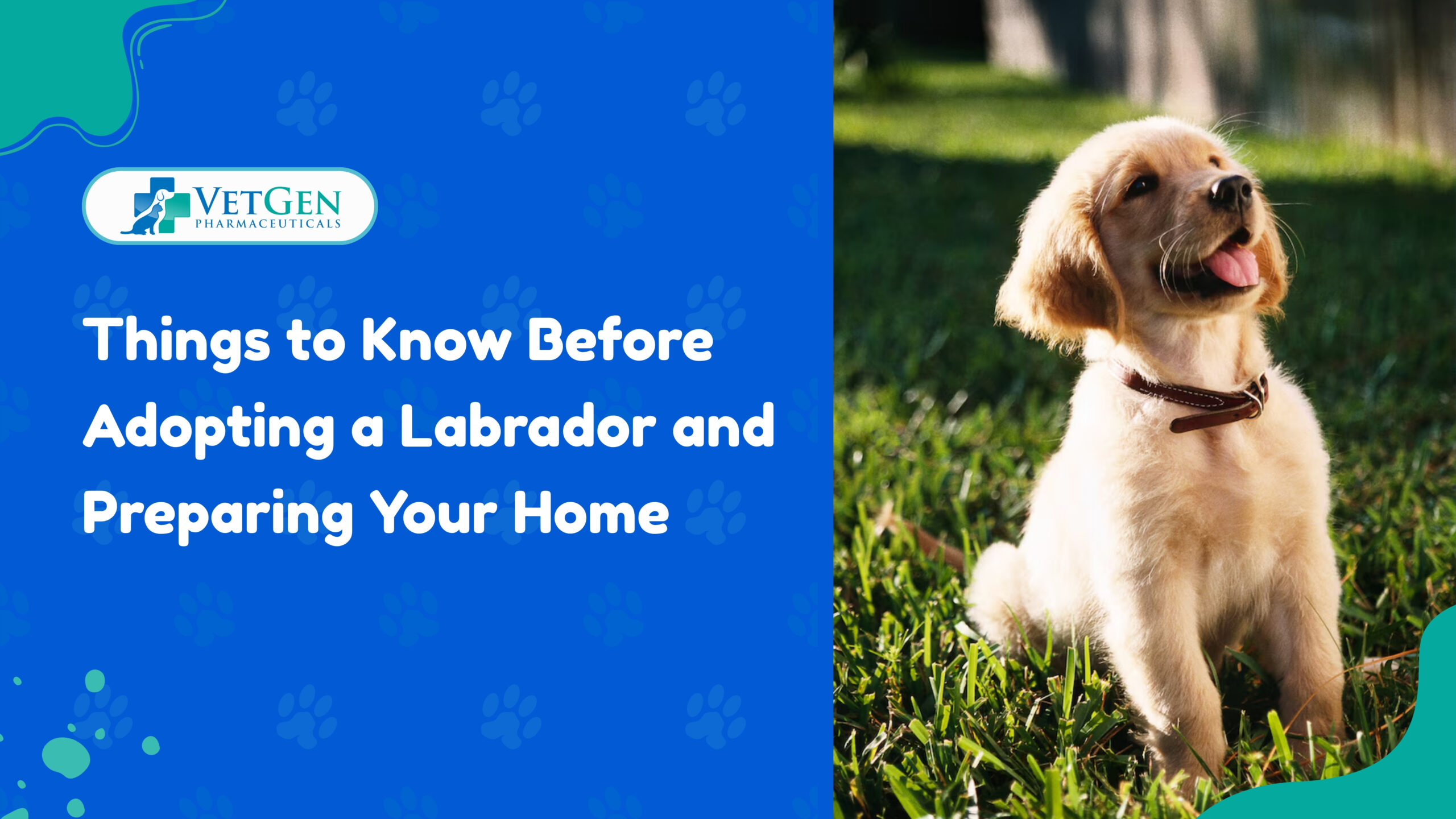Thinking about adopting a Labrador? You’re in for an exciting adventure. Labradors are one of the most popular dog breeds in the world. They’re affectionate, loyal, goofy, and downright lovable. But before you bring one into your life, there are a few things you should know.
Adopting a Labrador is more than just picking a cute pup and buying a few chew toys. These dogs have specific needs, behaviors, and energy levels that may surprise you if you’re not fully prepared. Additionally, setting up your home for their arrival is crucial to a smooth transition for both you and your new furry friend.
In this blog, we’ll walk you through what it means to live with a Lab and how to get your home Labrador-ready. Whether you’re adopting a puppy or a full-grown adult, there are some must-know details to keep in mind before leaping.
Understanding the Labrador Personality
Labradors are renowned for their friendly and outgoing personalities. They generally love people, other dogs, and even strangers. But their good nature doesn’t mean they’re low maintenance. Labs are high-energy, intelligent, and emotionally sensitive dogs that thrive on interaction and activity. If you’re looking for a laid-back dog who’ll lounge around all day, a Lab might not be your best fit.
Labs were originally bred to retrieve game, especially waterfowl, so they have strong instincts to fetch, chew, and carry things in their mouths. That means anything within reach, like shoes, socks, remote controls, etc, is fair game unless you’ve taught them otherwise. They’re also big-time shedders and droolers, so if you’re a neat freak, be prepared to make peace with the fur and slobber.
So, let’s get into what you need to know.
Energy Levels
Before you adopt a Labrador, know this: they have a lot of energy. Especially when they’re young, Labs need plenty of physical activity every day. That doesn’t mean just one walk in the morning and one at night. We’re talking about active playtime, running, swimming, hiking, you name it.
Without enough exercise, Labs can get bored and destructive. Chewed-up furniture, excessive barking, and digging are all signs of pent-up energy. If you live in an apartment or don’t have a fenced-in yard, you’ll need to get creative with regular outings and structured playtime. Dog parks, fetch sessions, and long walks are all essential to keeping your Labrador physically and mentally healthy.
Training and Socialization Are Non-Negotiable
Labradors are smart, and that intelligence is both a blessing and a challenge. They learn quickly, but they can also pick up bad habits just as fast if you’re not consistent. Training should begin as early as possible, ideally the moment they arrive at your home.
Positive reinforcement works best with Labs. They respond well to treats, praise, and play. But don’t mistake their happy-go-lucky vibe for easy compliance. They can be stubborn and get distracted, especially in new environments or when meeting new people.
Socialization is just as important. Exposing your Lab to different people, places, sounds, and other dogs early on will help them grow into a well-adjusted, confident adult. Labs that aren’t socialized properly can become overly excitable or anxious in unfamiliar situations, which can be tough to manage later.
Preparing Your Home for a Labrador
Getting your house ready for a Labrador requires more than just a dog bed and a bowl. Start by Labrador-proofing your home, because they will explore everything. Put away shoes, electrical cords, small objects, and anything else that might look like a chew toy. If you wouldn’t leave it on the floor with a toddler, don’t leave it for your Lab.
You’ll also want to invest in durable dog gear. Labs can be rough on their belongings, so flimsy toys, thin leashes, and cheap crates won’t last long. Look for sturdy items made for large, strong breeds.
Space matters, too. While Labs can adapt to apartment living with the right routine, having access to a yard or nearby open space is a major plus. Inside the home, set up a dedicated area where your Lab can sleep, eat, and relax. This helps them feel secure and gives them a “home base” to retreat to when they need downtime.
The Food Factor
Labradors are known for their love of food, and by love, we mean obsession. They’ll eat just about anything and are notorious counter-surfers, so don’t be surprised if your sandwich disappears when you turn your back for five seconds.
Since Labs are prone to obesity, you’ll need to be extra mindful of portion sizes, treat limits, and daily calorie intake. Overfeeding can lead to health problems like joint issues, diabetes, and heart disease. Speak with your vet about the right type and amount of food based on your Lab’s age, weight, and activity level.
Also, always store food (including human snacks) out of reach. Labradors will raid the trash, sniff out pantry stashes, and find that one bag of treats you thought you hid well. It’s not mischief, it’s just their nature.
Grooming and Shedding
Labradors have a double coat that sheds heavily, especially in spring and fall. If you’re adopting a Lab, get ready for hair on your clothes, furniture, and probably in your coffee. Regular brushing, ideally a few times a week, can help keep shedding under control and keep your dog’s coat healthy.
Bathing isn’t needed too often unless your Lab rolls in something smelly (which is a possibility). Every 4–6 weeks is usually enough, though you should clean their ears and trim their nails more frequently.
Also, Labs love water, so don’t be surprised if they jump into lakes, puddles, or even the bathtub without warning. That enthusiasm is adorable, but it can also mean more cleanup on your end.
Health Considerations Specific to Labradors
Labradors are generally healthy dogs, but like all breeds, they have some genetic predispositions to be aware of. Hip and elbow dysplasia, ear infections, and certain eye conditions are more common in Labs than in some other breeds.
Their floppy ears also make them more prone to moisture buildup and yeast infections, especially if they swim a lot. Regular ear cleaning is a must to avoid painful and persistent issues.
Another thing to keep in mind is that Labs often hide pain well. They might still wag their tails and run around even if something’s wrong. That’s why regular vet checkups are critical. Early detection can make a big difference in managing or preventing chronic conditions.
Emotional Needs
Labradors form strong bonds with their humans. They’re happiest when they’re with you, whether you’re out on a walk or just watching TV. If you’re someone who’s gone most of the day or travels frequently, a Lab may not be the best match unless you have help at home or can invest in doggy daycare.
These dogs can experience separation anxiety if left alone too long or too often. That anxiety can show up as barking, chewing, pacing, or even trying to escape. It’s not that they’re being “bad”, they just miss you and don’t know how to deal with it.
To meet their emotional needs, make sure you’re providing plenty of affection, interaction, and routine. A Lab that feels loved and engaged is far less likely to act out.
Conclusion
Adopting a Labrador is a big, exciting step, but it’s not one to take lightly. These dogs are friendly, loyal, and full of energy, but they come with their own unique needs and quirks. Understanding their temperament, preparing your home, and committing to their physical and emotional well-being are all essential parts of the journey.
Want to learn more about caring for your Labrador or any other breed? Visit VetGenPharmaceuticals.com to explore tips, advice, and helpful info to keep your dog happy, healthy, and thriving.
Frequently Asked Questions
Are Labradors good for first-time dog owners?
Yes! Labradors are known for their friendly, loyal, and eager-to-please nature, which makes them a great choice for first-time dog owners. Just keep in mind they’re energetic and need regular exercise, training, and mental stimulation to stay happy and healthy.
How should I prepare my home before bringing a Labrador puppy home?
Puppy-proof your space by removing small objects, securing cords, and blocking off unsafe areas. Stock up on essentials like food and water bowls, chew toys, a comfy bed, and a crate. Labradors are curious and active. So a safe, structured environment is key from day one!






